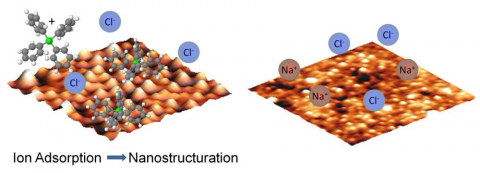From fire ants to graphene: some considerations on water-hydrophobic interfaces
NaMeS students are invited to IPC PAS Seminar Lecture:
Prof. Carlos Drummond
Centre National de la Recherche Scientifique, CNRS
France
Tuesday 10th October, 10:00 to 11:30
Assembly hall of the IPC PAS, Kasprzaka 44/52, PL-01 224 Warszawa
Abstract
The interface between water and hydrophobic surfaces plays a central role in a number of important subjects like proteins folding, surfactant self-assembly, detergency or oil recovery. These interfaces show a complex behavior not always well-understood, often determined by (apparently) secondary actors like ionic species or gases dissolved in the aqueous phase. In this seminar I will describe few examples illustrating the complexity of these interfaces. More precisely, I will discuss the interaction between ions in water and hydrophobic polymers,1 the behavior of single layer graphene or carbon nanotubes in water,2 and ionspecific effects on the behavior of temperature-responsive Poly(N-isopropylacrylamide).3 Finally, I will discuss some examples of how the complexity of water-hydrophobic interfacescan be of use to manipulate the properties of materials.
References
1. Siretanu, Chapel and Drummond, ACSNano 5, 2939, 2011
2. Bepete, Anglaret, Ortolani, Morandi, Pénicaud and Drummond. Nature Chemistry, 9, 347–352 2017
3. Bastos-Gonzalez, Pérez-Fuentes, Drummond and Faraudo. Current Opinion in Colloid & Interface Science, 23,19–28, 2016




